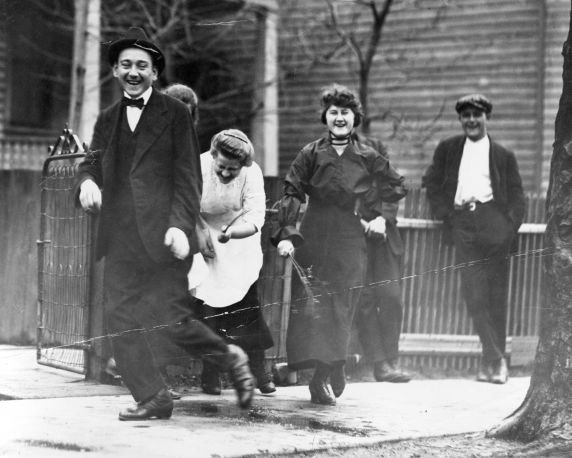(DN_21717) Ethnic Communities, Polish, Customs, Dygus Day, 1916
Posted March 2nd, 2011 by eclemens
A woman taps a man on the leg with a willow switch as onlookers laugh in approval during "Switching Day" festivities.
Known as Smigus Dygus, or in America as Dygus (Switching) Day, the custom dictates that on Easter Monday young unmarried girls may be doused with water and switched lightly with willow sticks. The water represents fertility, for both the land and the woman. The young lady above, decidedly modern in her thinking, has reversed roles with the young man.

Date:
1916-04-03Physdesc:
PhotographPhotographer:
Detroit News Staff- Login to post comments
- Thumbnail
- Printer-friendly version

 Reddit
Reddit Facebook
Facebook LinkedIn
LinkedIn